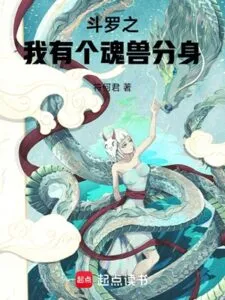The Heart is a Void: Ashes to Ashes - Chapter 114: Your Cameo
Chapter 114: Your Cameo
Sharak walked up to the skeleton of the dead protestor outside his building, on seeing that the smoke had cleared.
He cast [Dormition’s Servitude], and the skeleton took on a faint, dark-green glow as it scrambled to its feet.
“Excellent,” he said. “What should we have it do? Wait, dance a jig.”
At this command, the skeleton shook into action, moving its legs creakily from side to side in a simple dance.
“Does that mean it worked?” Fahiz asked non-commitally.
“Indeed,” Sharak replied. “Well, let’s have it drag out the second chessboard.”
The skeleton walked skittishly into the room behind Ala-ud-din, and lifted the large chessboard from there. It brought the chessboard out of the room, and laid it on the floor next to Ala-ud-din’s chessboard. Crucis could see that the new board was filled with an odd assortment of figures resembling mythical and ordinary creatures. Each figure was twisted and contorted into an aggressive, snake-like, wild-eyed pose, and stared across the board with a bloodthirsty glare.
“That should be fine. Now this skeleton can find a coffin to rest in,” Sharak said, and the skeleton sauntered into a room to the right of the building’s door.
Crucis heard a loud, creaking noise from that room, and then a thud as Sharak uncast the spell and sent the skeleton falling lifelessly into the coffin which it had presumably eased itself into.
“You have too many of these skeleton servants now,” Fahiz said. “We’ll have to make a plantation of some sort for them to work on.”
“We could always make them into a dancing troupe,” Sharak replied.
“That’s a promising idea,” Crucis chipped in. “I did always figure that there weren’t enough dead K-Pop groups.”
“Well, it would be a start, in that case. A queer fulfillment for the ancient necromancer Miindol’s words, that, as Ragnarok approaches, ‘the dark, relentless band / Of the eternal slaves of necromancy is unloosed and gathered round / Athwart this ancient, inchoate gloom, to wait the final end.’ But we can cross that bridge when we come to it.”
“What’s with all of these chess pieces?” Danemy asked. “They all look quite fierce.”
“Ah, these.” Sharak gestured towards the board. “They are actually not for chess, rather based on an old local custom named Arinos. It was initially a way for people to understand the dangerous, fantastical world around them, through an animistic ritual where voice was given to the creatures identified as fundamental deities. In time, however, it was found to be a powerful engine for local mythology, and many plays and stories were built based on the events of the game. In fact, even several buildings, especially during the game’s early period where it had some complex maneouvres that we still haven’t fully recovered.
“The creatures are now regarded as mythological archetypes, and many theatres have their likeness carved on the walls. The original form of this board is currently unknown, and modern versions of the board take many forms, the most popular being based on a chessboard.”
“So what are the pieces now?” Danemy asked. “All the pawns have been replaced with rats, I guess. Then there are at least six different creatures in the back? The one in the King’s spot looks like a cobra with a hood.”
“That is indeed the king cobra, who is identified with the head god Yanazthir,” Sharak said. “That god is sometimes said to be a primitive form of Dravaistaya, based on a few early poems referring to it in terms that would later be transferred to Dravaistaya – it’s difficult to confirm, but is a possibility. It is the tallest piece. Next to it is another serpent, who we now know as Jormungandr, although locals called it Istakorz. The Bishop on the right is now the jackal, whom locals characterised as a shapeshifter, and the one on the left is another shapeshifter, the lynx.”
As Crucis looked over the board, he saw that both of the pieces in the Bishop position appeared similar, though there were subtle differences. Both creatures were portrayed in an upright pose, with paws extended on both sides with twisting claws, and had large mouths that contained rows of jagged teeth. However, the ‘jackal’ seemed to be slightly more downcast and had a more rough, thin ‘fur’ pattern carved closely across its sides, while the other piece’s thick, sculpted fur came to jut out freely like a sunburst and its ears were pointed and cat-like. The fundamental design was still the same, however, and the most obvious feature of both was the large, teethed mouth which gaped aggressively towards the other side of the board.
“The Knights are now winged dragons,” Fahiz added. “The Rooks are a bit of a strange creature, they appear akin to mountains but with a large, teethed mouth that rises vertically on one side, some say that they represent an early belief in mountain spirits, others identify them with volcano gods attested in early literature. Either way, it is what it is.”
The dragons looked ferocious, but also had slightly thin, wide wings that were finely decorated with a series of small patterns, and which stretched backwards until the edges of the wings hovered off the board. The wings looked almost like a small silk moth’s, and had silver encrusted around the edges.
“Sometimes there are local variations in what pieces are used, but these are the typical standard,” Sharak said. “There’s also a miscellaneous piece which is sometimes used, it’s called the Simpleton.”
He drew out a small, wooden piece from a drawer. This piece looked like a small, stick man wearing a thatched straw hat.
“If the other pieces represent mythological grandeur or larger themes, this Simpleton piece represents a Polonius-esque contrast to that, a sense of provincial ignorance that does not understand the mythological figures or the natural world and is skeptical towards them. It is sometimes known as the ‘Ignorant Intruder,’ or ‘The Critic.’ Its use varies from a clown role to a polemical one as representing a detractor.”
“So what does this Arinos game look like?” Crucis asked.
“Well, it has several more complex traditions, such as where the pieces are positioned. But the basic dynamic is fairly simple to understand. Each player is assigned one ‘character,’ and uses a piece which represents this. They then engage in dialogue which represents this character. It was how we began to train the automatons, and also allowed them to more easily understand how a text can contain different voices and to balance these out. By now, we have trained Ala-ud-din in some of the more advanced aspects of the game, such as piece arrangement, and so humans can just stick to the basic dialogue. So that makes things more easy: just transcribe a dialogue, and Ala-ud-din will rearrange the pieces in order to display the current state of the game.”
“Well, that’s useful, so we can try it out quickly,” DicingDevil said. “Is it like chess, where you are trying to beat the opponent with your pieces?”
“No, it’s non-competitive. The point is the arrangements created, not to win or lose. Otherwise, the dialogue would be constrained. This is why the Simpleton isn’t typically included as a standard piece, because he is considered to basically ‘lose’ the conversation and cannot actually use any other pieces or create arrangements. However, they are still mostly played for laughs, and their user typically ‘resigns’ at the end of the game in the style of a chess game, by knocking down the piece. Either way, it’s more akin to a form of composition than a conventional ‘game,’ but our word for ‘game’ – ‘afgan’ – has a less precise meaning.”
“Should we demonstrate a game for them?” Fahiz said, grabbing the Simpleton piece.
“Sure. I’ll play the great volcano-dwelling fire dragon, [Arkia],” Sharak said, taking one of the dragon pieces off the board. “Remember not to move the pieces this time – although we do it by habit sometimes, it’s easier to demonstrate if we let Ala-ud-din do that.”
They placed their pieces near the centre of the board, and Sharak took out of a piece of paper to transcribe the conversation. Crucis noticed that Sharak would draw a horizontal line across the piece of paper, separating specific lines of dialogue. This was probably to help the automaton to differentiate each player.
SIMPLETON. What’s this? What a strange creature, it even has wings! Is it some sort of dragon? How extravagant and pretentious!
ARKIA. A fool approaches. Why?
SIMPLETON. I’m just trying to help, man!
ARKIA. Help with what?
SIMPLETON. For one thing, the temperature of this place increases a ton every time you talk! It’s uncomfortable. You should work on your public elocution, so that audience members like me don’t burst into flame and can enjoy ourselves.
ARKIA. I don’t even know who you are. What gave you the impression that I wanted help with impressing you?
SIMPLETON. Well, you should impress me! And, come on, speak with more feeling and emotion, you sound like a machine.
ARKIA. I will always sound like a machine to you, because you are a flamboyant clown who only understands gay dancing. Do you just come here to mock your betters?
SIMPLETON. Also, since when were there dragons in mountains? I know all about mountains – I visited one or two, when I was young – and I never saw a dragon. So there can’t be dragons in mountains. I saw a dragon once, but it was in the sky. So dragons live in the sky, and not in mountains. This is all wrong! Someone should fix it!
ARKIA. I defer to your expertise on the matter of dragons, since I’ve never met a dragon –
SIMPLETON. But that’s impossible, you are a dragon!
ARKIA. I was being ironic.
SIMPLETON. Then you should have done a scarequote gesture with your hands, so that I would know.
ARKIA. A capital idea… But I despair of you knowing anything, so I’m not sure if it’s worth the bother.
SIMPLETON. Another thing, why do you have such sharp teeth? I find it off-putting and slightly edgy.
ARKIA. No, them being edgy is the idea.
SIMPLETON. Well, maybe there’s some sort of deep, artsy ‘idea’ behind this all. But I don’t get it.
ARKIA. Why, that’s a pity.
SIMPLETON. Anyway, so what do you do in here?
ARKIA. Chill out.
SIMPLETON. But how? It’s not cold! You can’t ‘chill’ if it’s not cold, haven’t you checked a dictionary?
ARKIA. Where there’s a will, there’s a way.
SIMPLETON. No, there isn’t! The will cannot triumph. Think about it, no creatures live in marshes, because they would spend all of their time holding their nose because of the smell, and closing their eyes because it looks so unsightly and bleak. I find this uncomfortable, so there’s no way that anyone can be comfortable with it!
ARKIA. It cannot triumph, and yet it does. There are more things in heaven and earth than are dreamt of in your – whatever it is you have.
SIMPLETON. Well, do you ever, you know, get out of here, get some fresh air?
ARKIA. Once in a while, I fly out and ravage towns –
SIMPLETON. But that’s illegal!
ARKIA. Is it? I wouldn’t know, I haven’t read the laws of each Kingdom.
SIMPLETON. I have a copy of the laws of my Kingdom, I keep a book of them in my pocket – wait, it’s on fire! That’s not good!
ARKIA. Yes, it isn’t. Now how will we ever figure out what the law says about dragons burning down cities?
SIMPLETON. Well, I’m sure it’s forbidden somewhere!
ARKIA. But how can we check, if the book burned down? Maybe it’s actually legal to burn down these places… But so be it. Any way the wind blows it doesn’t matter to me.
SIMPLETON. But what if you broke the law, then –
ARKIA. Quite true, actually, that would be heinous. If it’s the case, I’d think that Beelzebub must have a devil put aside for me.
SIMPLETON. Also, you must think, it’s a bit jarring to hear about you ‘chilling out,’ and then hear about ravaging towns! You should space these things out or something, maybe add some backstory to explain it.
ARKIA. Why does it matter? Some times, I am chilling in a volcano, and at other times I am ravaging towns. It’s just a question of having multiple capabilities. A fire does not easily stay still and in place. Why are you taking issue with me so much? Who are you?
SIMPLETON. It’s just jarring, that’s all. I don’t understand –
ARKIA. And so you don’t. Is that my problem, or yours?
SIMPLETON. Come on, lighten up! I once wrote a ditty about a dragon, he was also mean and angry like you, but eventually he calmed down and learned to appreciate people. Why can’t you be like him?
ARKIA. …Because I’m not?
SIMPLETON. But his character developed, why can’t yours?
ARKIA. Um, his character didn’t develop. He’s literally fictional. You just changed his character. If I set you on fire, then does that count as your self-immolation?
SIMPLETON. Well, it doesn’t seem –
ARKIA. Only one way to find out.
Fahiz politely tipped the Simpleton piece onto its side to end the demonstration.
“This was amusing,” Crucis said. “But the Simpleton seemed to think that he could use a dragon piece of his own at the end there. What’s up with that?”
“It is a peculiar quirk of the ‘Intruder’ piece,” Sharak replied, “that after enough exposure to this game, it will try to counterfeit its way in. It is like how a fervent enough critic acts like a counterfeit author to the work being criticised. But it is all the same – they still cannot arrange their pieces around them. You should not trust them, for, as Byron once said:
“”As soon
Seek roses in December—ice in June;
Hope constancy in wind, or corn in chaff,
Believe a woman or an epitaph,
Or any other thing that’s false, before
You trust in Critics…””
After Sharak placed a transcript of the Arinos conversation on a small tray behind Ala-ud-din’s shoulders, the automaton took a few seconds to process it and then began to rearrange the pieces on one side of the board. Sharak explained what was happening.
“Since Arkia began by offensively characterising the other side of the dialogue, Ala-ud-din first moves the lynx piece. In our mythology, it is associated with illumination and judgement – some call it ‘the crazy sun.’ It ignores the Simpleton’s criticism, and simply speaks past him to characterise the situation. Since this is used in response to the Simpleton, it is placed in front of Arkia, facing the Simpleton. Next to this lynx is the mountain, used to represent the territorial hostility, or the rising heat as it speaks.
“Since the lynx simply illuminates the Simpleton critic, rather than sharing much information about the dragon itself, this eventually means that the dragon becomes ‘ironic’ or begins to reply with a focus on his critic’s perspective while not taking this seriously. ‘Irony’ is typically illustrated by placing a rat – the infiltrator – beside the lynx, which Ala-ud-din has just done. Further, the specific nature of the irony here, which involves a somewhat artificial echo chamber, is displayed through placing a mountain in front of the rat – the dragon will primarily leave the Simpleton to answer his own questions, although these answers will be senseless. Since it primarily ironises questions dealing with its own identity or conduct, we can place a dragon next to this mountain, to show that the mountain being climbed involves understanding a dragon.
“This implies that a world-serpent is placed beside the original dragon, in order to clarify that the two dragons are equated. To simplify matters, when the world serpent is played on the same line as the main piece, all pieces of the same type are identified with each other. This world-serpent situation is confirmed by how the dragon uses its elemental powers.”
Once Ala-ud-din was finished, the pieces were arranged in the following formation:
Jormungandr – Dragon
Mountain – Lynx – Rat
– Mountain-Dragon
“A bit exotic,” Fahiz said, “since it’s a polemical formation. But it does remind me of the architecture of something nearby, was it near the haunted Southern woods?”
“The one beneath Kruxol? I recall that there were some ghosts, or something, to the West,” Crucis said.
“Yes, that one. There’s been a long history of hauntings there, though I don’t recall what it looks like now. But I think the place I remember was quite far West…”
“Hm. This does resemble the old Temple of Apollo towards the South-West, hidden in a forest,” Sharak said. “It features a high colonnade down the left side, and a few majestic arches through the centre which grow lower towards the entrance. To the right of the entrance, there is a column with grotesques on either side, and a large grotesque of the sun is carved on the right wall inside. It is known to scare off many visitors, though not the steadfast worshippers of Apollo, and when I looked inside it was incredibly dizzying – as Apollo’s temples tend to be.”
“Excellent, that’s certainly similar. Well, from what I can recall, there was something quite poetic about that architecture, the arches connecting the firm columns on one side with the large, threatening grotesque that ‘decorates’ the other side. Almost as two-faced as Afterglow. It reminds me of the old saying attributed to Apollo, when he was asked about a King who proclaimed himself a God, ‘Egret with melting wings! Why do you fly still, so close to the sun? As you rise, you fall. To rise to the heavens, you plummet to the depths. Why conquer then, pale Galilean?’ These dizzying contrasts and paradoxes are present in most temples and monuments of Apollo, I think there’s still plenty about them that we have yet to understand.”
Once Ala-ud-din was satisfied with the arrangement of the pieces, it ceremoniously swept the pieces on the Simpleton’s side off the board, and they flooded to the ground where they landed with a crash. After this loud, sudden noise, Fahiz laughed lightly at the players’ surprise.
“So, why don’t you lot have a try before leaving? I’m sure it’ll count as some kind of achievement as well,” Sharak said. “Why not Crucis and Danemy first? You seem the most lively.”












-1579-75x106.jpg)

